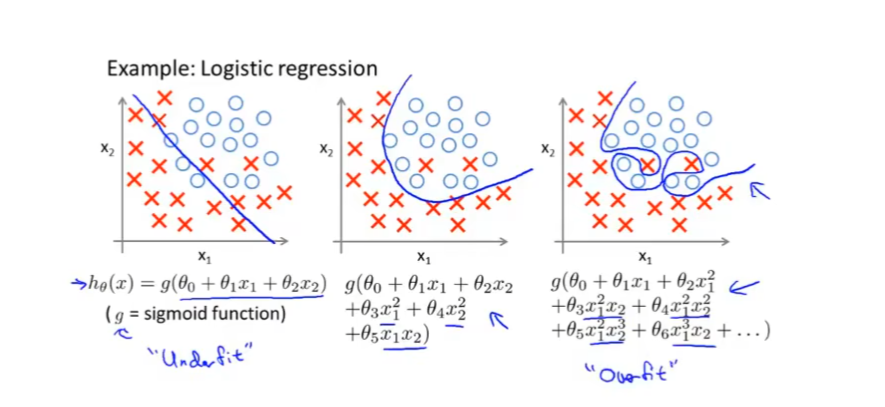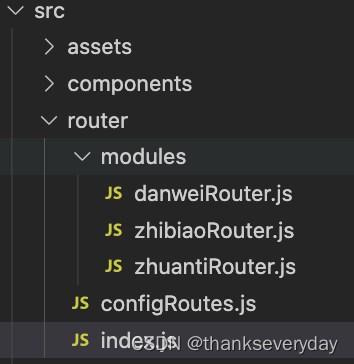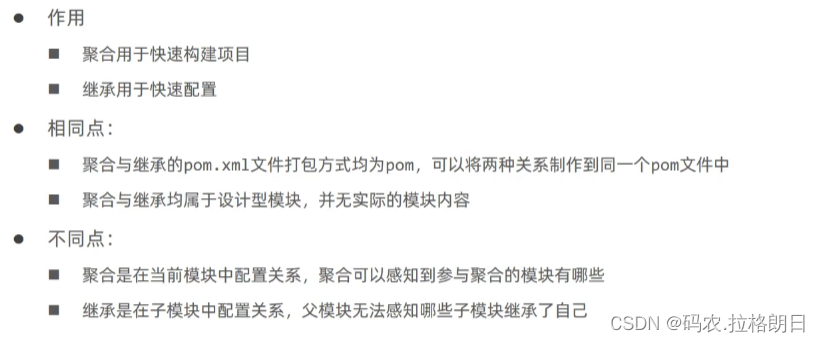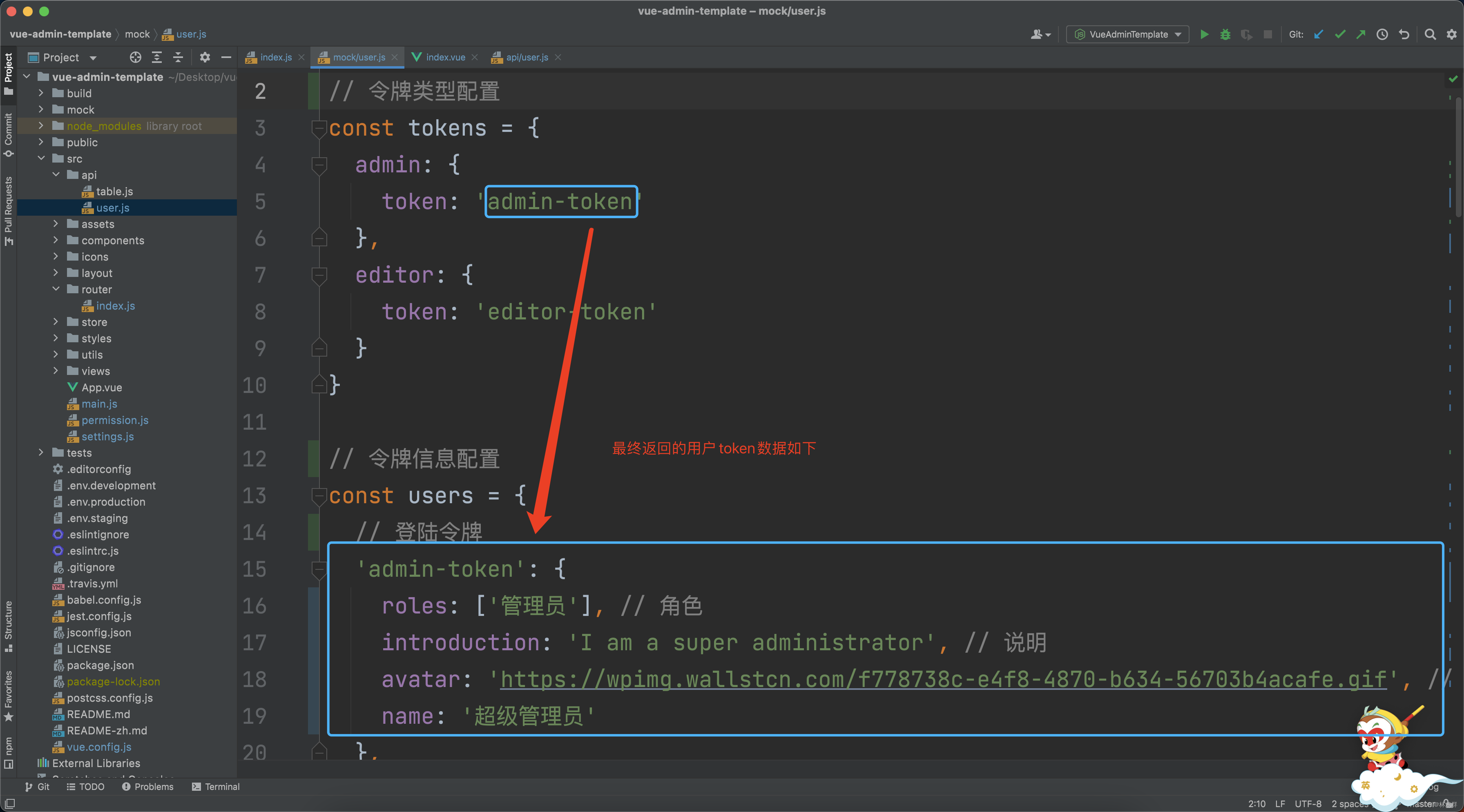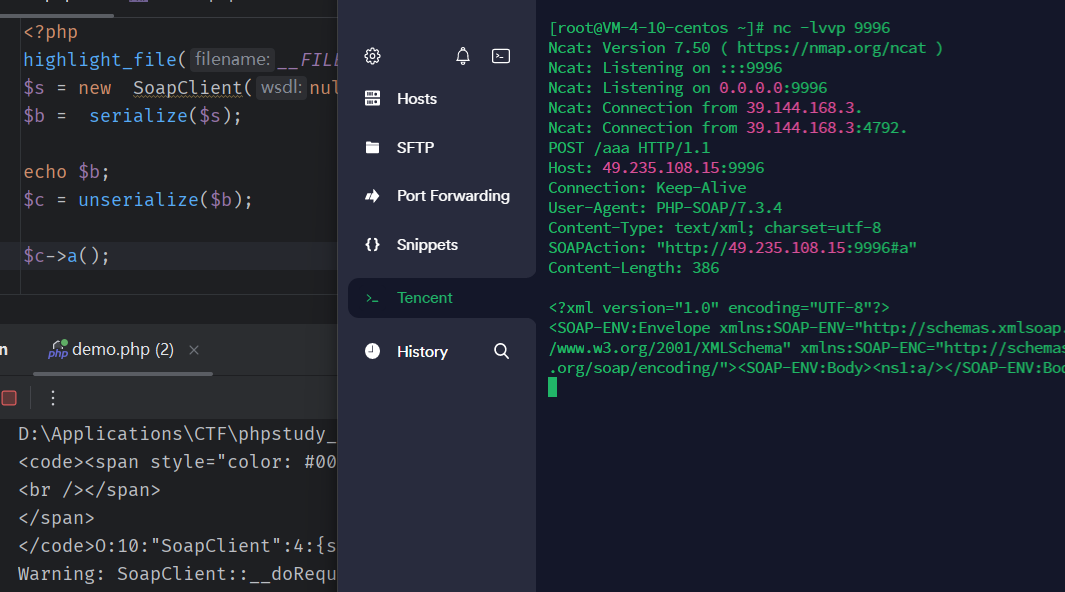NLP&ChatGPT&LLMs技术、源码、案例实战210课
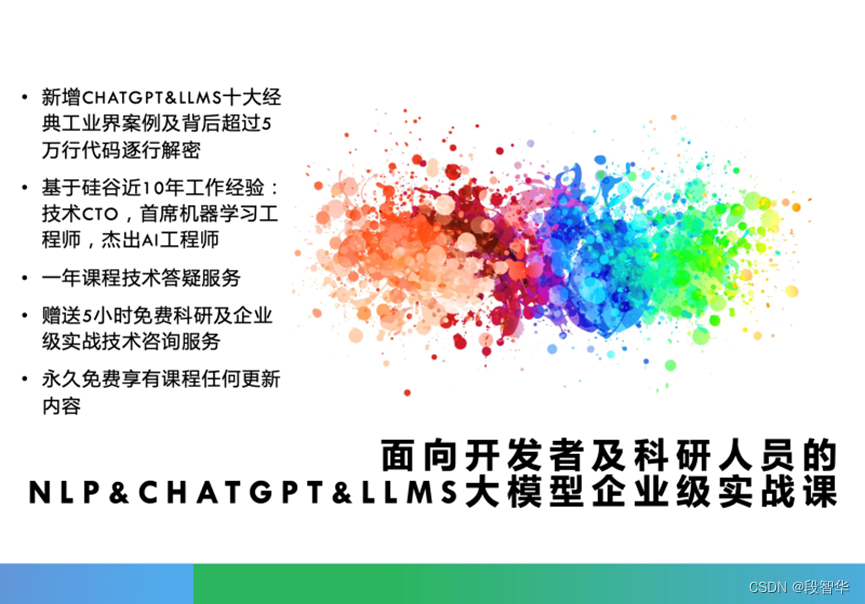

超过12.5万行NLP/ChatGPT/LLMs代码的AI课程
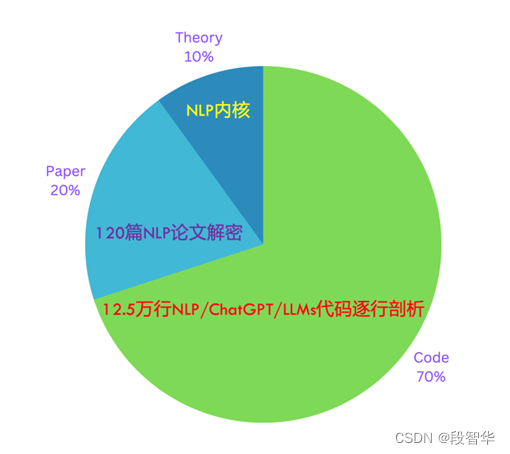
讲师介绍
现任职于硅谷一家对话机器人CTO,专精于Conversational AI
在美国曾先后工作于硅谷最顶级的机器学习和人工智能实验室
CTO、杰出AI工程师、首席机器学习工程师
美国一家Talents Sourcing公司的Founder及CTO
21本人工智能及数据科学相关书籍作者。
NLP&ChatGPT&LLMs课程备注
1、本课程为高端技术型知识付费,需要进行源码交付及一年课程技术答疑指导,请添加Gavin导师微信:NLP_Matrix_Space获得相关的视频、代码、资料等。
2、课程面向Developers及Researchers,学习课程需要有基本的Python代码编程经验。课程针对没有基础的学员录制了Python及Transformer免费赠送的基础课,以帮助零基础学员平滑过渡到正式课程的学习。
3、课程深入、系统、使用的讲解Transformers、ChatGPT、LLMs等NLP生产级代码实战及科学研究。核心围绕模型、数据、工具三大维度展开。
4、课程购买者在享有自购买之日起一年的课程技术答疑服务同时,均免费享有5个小时企业级及科研技术咨询服务,由Gavin导师提供生产级技术咨询服务及科研论文指导等,该咨询服务需要提前一周预约Zoom会议。
5、购买本课后,课件及相关的资料、源码等,仅用于个人学习和技术交流,不能作为其他和商业用途,为了保护知识产权,购买后不退款不更换课程。
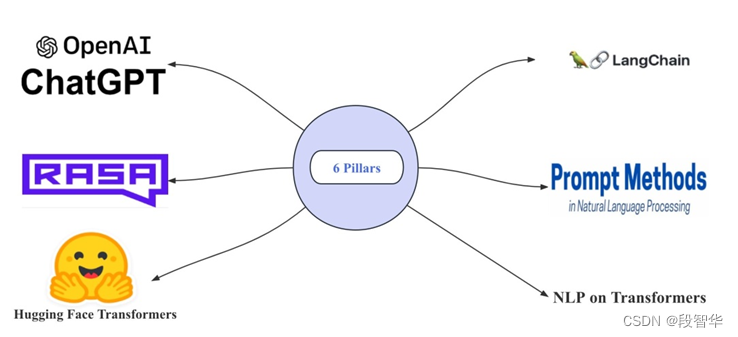
In this comprehensive course, we will explore diverse applications that harness the capabilities of NLP&ChatGPT&LLMs. Our focus is not only on leveraging language models but also on creating applications that are data-aware and agentic, ensuring that they go beyond mere model integration.

Throughout this course, we firmly believe that the true power and distinctiveness of language model applications lie in their ability to connect with external data sources and actively interact with their environments. By incorporating data-awareness, we can enhance the depth and breadth of information available to the language models, enabling them to deliver more accurate and insightful responses. Additionally, by embracing an agentic approach, we empower language models to engage and respond dynamically to their surroundings, creating richer user experiences. Further, the course will help learners to explore the top best papers and their implementations in NLP&ChatGPT&LLMs.
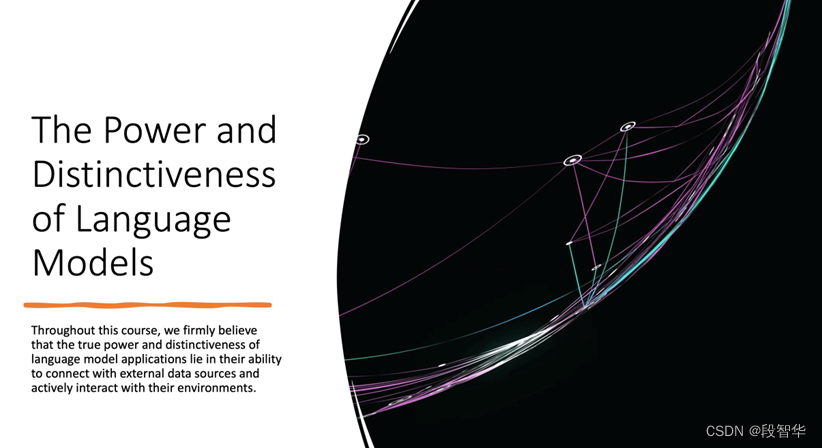
Join us on this exciting journey as we delve into various practical applications that bring language models to life. By the end of this course, you will have gained valuable insights and skills to develop cutting-edge applications that are not only powered by language models but also possess the qualities of being data-aware and agentic. Get ready to unlock the true potential of language models in the realm of application development!
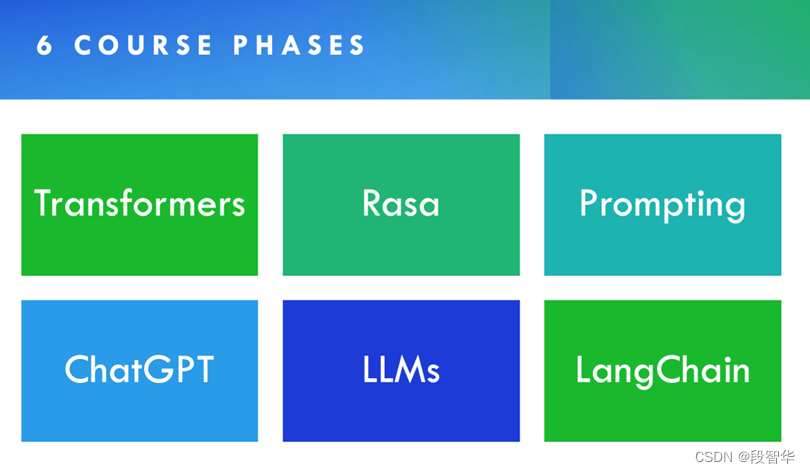
面向人群
1,计算机相关专业的本科/硕士/博士生
2,Transformer、ChatGPT、LLMs技术爱好者
3,智能对话机器人爱好者
4,想从推荐系统、知识图谱转行到NLP的人员
5,已经有NLP从业经验想升级技能体系的开发者
6,企业中NLP高级科研人员
7,想在短期内系统全面深入的掌握NLP的IT人员
备注:课程针对没有基础的学员录制了Python及Transformer基础课。
面向资料及答疑
购买后联系授课导师Gavin获得代码、资料及完整的课程视频(包含额外的根据学员学习反馈而补充的视频及助教录制的视频)。
课程提供1年的技术答疑服务,Gavin老师负责所有课程技术问题的答疑服务。
课程收获:
1, 通过近13小时掌握基于Transformer的新一代NLP架构、算法、论文、源码及案例,轻松应对Transformer面试及新一代NLP架构及开发工作。
2, 通过近21小时学习导师从自己阅读的超过3000篇NLP论文中的精选出的10篇质量最高的论文的架构、算法、实现等讲解,对新一代的NLP技术了然于胸,极大的加速NLP科研及项目开发进度。
3, 通过近65小时彻底掌握NLP技术的集大成者Rasa这一全球最成功的的智能业务对话机器人架构、算法、源码及实战案例,成为NLP技术公司或者团队NLP技术的引领者。
4, 通过10大企业级NLP实战项目,不仅能够贯通NLP整个领域的核心技术,同时能够学习企业级NLP成熟项目代码的思想和精华,帮助学员轻松应对任意难度的NLP项目面试的同时还能够把这些项目稍加修改应用于企业NLP产品开发中。
5, 该课程尤其是对短期内想对NLP领域有系统全面深入认识特别有帮助,所有的内容都是基于企业开发中用到的内容由浅入深环环相扣展开,可以大大节省学习时间。同时对具有NLP或者知识图谱或者推荐系统工作经验的同学而言,会在1-3月的时间内完成技术的更新换代,成为最新人工智能技术的引领者。
6, ChatGPT技术和OpenAI API的基础应用和进阶应用:学习了ChatGPT技术和OpenAI API的基础和进阶应用,如大模型概述、API接口概述、向量检索、文本生成、嵌入式向量检索实现问答系统、使用LangChain等,可以在不同的场景中灵活应用ChatGPT技术和OpenAI API解决问题。
7, ChatGPT提示工程的构建和应用:学习了如何构建ChatGPT提示工程以及如何应用它来实现概括总结、推断任务、文本转换和扩展功能等,可以自己构建ChatGPT提示工程并应用于实际场景中。
8, 聊天机器人的构建:学习了如何使用ChatGPT提示工程构建聊天机器人和订餐机器人,可以自己构建聊天机器人并应用于实际场景中,提高自己的实际能力和竞争力。
9, 类ChatGPT开源大模型的概述和进阶项目实践:学习了类ChatGPT开源大模型的概述和发展历程,以及基于LoRA SFT+RM+RAFT技术进行模型微调、P-Tuning等技术对特定领域数据进行模型微调、LLama Index和Langchain技术的全面实践,以及基于向量检索技术对特定领域数据进行模型微调等进阶项目实践,可以更好地应用类ChatGPT开源大模型解决实际问题。
10, 案例实践和应用场景:通过多个案例实践,了解ChatGPT技术和OpenAI API的应用场景,并掌握如何在实际场景中解决问题。这些案例涉及多个领域,包括聊天机器人、订餐机器人、问答系统等,使得学生可以将所学知识应用于实际工作中,提高自己的实际能力和竞争力。同时,学习了企业级NLP实战项目的代码和思想,可以将这些项目稍加修改应用于企业NLP产品开发中,提高自己的实际应用能力。
Change log:
2023-5-29: 新增ChatGPT&LLMs十大经典工业界案例及背后超过5万行代码逐行解密
课程大纲(基于直播持续更新):
第1课 Bayesian Transformer思想及数学原理完整论证
1,线性回归及神经网络AI技术底层通用的贝叶斯数学原理及其有效性证明
2,人工智能算法底层真相之MLE和MAP完整的数学推导过程概率、对数、求导等以及MLE和MAP关系详解
3,语言模型Language Model原理机制、数学推导及神经网络实现
4,图解Transformer精髓之架构设计、数据训练时候全生命周期、数据在推理中的全生命周期、矩阵运算、多头注意力机制可视化等
5,什么叫Bayesian Transformer,Bayesian Transformer和传统的Transformer的核心区别是什么?
6,Bayesian Transformer这种新型思考模型在学术和工业界的意义是什么,为什么说Transformer中到处都是Bayesian的实现?
7,贝叶斯Bayesian Transformer数学推导论证过程全生命周期详解及底层神经网络物理机制剖析
第2课Transformer论文源码完整实现
1,Transformer架构内部的等级化结构及其在NLP中的应用内幕
2,数学内幕、注意力机制代码实现、及Transformer可视化
3,以对话机器人的流式架构为例阐述Transformer学习的第三境界
4,以智能对话机器人为例阐述Transformer的自编码autoencoding和自回归autoregressive语言模型内幕机制
第3课:Transformer语言模型架构、数学原理及内幕机制
1,语言模型的链式法则、运行机制及为何说LM是一个Classifier?
2,基于概率统计Statistical Language Models语言模型内部机制、数学公式、及完整的示例
3,基于神经网络Neural Language Models语言模型内部机制、数学公式、及完整的示例
4,使用困惑度及Cross Entropy来衡量语言模型的质量具体实现及数学公式推导分
5,Language Model底层的数学原理之最大 似然估计MLE及最大后验概率MAP内部机制与关系详解
6,语言模型底层的数学原理之Bayesian模型原理与实现
第4课 GPT自回归语言模型架构、数学原理及内幕机制
1,语言模型的运行机制、架构内部及数学实现回顾
2,GPT可视化、Masking等工作机制解析
3,GPT中的Decoder-Only模式内部运行机制解析
4,数据在GPT模型中的流动生命周期Input Encoding、Self-Attention、及Model Output详解
5,GPT中的Masked多头注意力机制及全连接神经网络内部运行机制解析
第5课 BERT下的自编码语言模型架构、数学原理及内幕机制
1,双向Masking机制数学原理剖析
2,BERT语言模型架构内幕详解
3,BERT训练任务和调优
第6课 BERT Pre-taining模型源码完整实现
1,BERT神经网络的完整源码实现
2,预训练任务MLM完整源码实现
3,预训练任务NSP完整源码实现
第7课 使用BERT 进行Document分类任务案例实战
1,BERT Fine-tuning 数字原理剖析
2,模型及数据处理代码
3,BERT Fine-tuning训练完整代码
第8课 使用BERT进行NER案例实战
1,BERT Fine-tuning 进行NER原理解析
2,Tokenization及Input端代码
3,BERT Fine-tuning训练及优化
第9课 使用BERT进行多任务Fine-Tuning解密
1,Fine-Tuning最佳策略
2,Pre-Training深度优化
3,Multi-Task微调解密及案例
第10课 使用BERT对影评数据分析(数据处理、模型代码、线上部署)
1,Sogou New数据处理
2,模型Input源码
3,模型训练及优化
第11课 BERT论文解密、数学推导及完整源码实现
1,透视BERT论文的所有技术要点
2,剖析背后的数学原理
3,通过代码论证所有的理论
第12课 基于Transformer的多轮对话系统四要素解密
1,Intent预测与管理
2,对话管理State Tracking
3,对话行为的预测,根据现在和之前的对话预测接下来的情况
4,Response Selection策略
第13课 如何使用Transformer构建具有抗干扰能力的面向任务的对话系统?
1,使用Dialogue Stacks和LSTM来处理subdialogue的潜在问题分析
2, Transformer实现扛干扰的多轮对话系统架构剖析
3, Transformer实现扛干扰的多轮对话关键技术剖析
第14课 使用Transformer构建具有抗干扰能力的对话系统Experiments深度剖析
1,针对Sub-dailogues进行抗干扰处理实验分析
2,与LSTM进行对话处理试验对比
3,通过Modular Training进行试验分析
第15课 基于多任务Transformer架构的Intent和NER算法实现
1,对话机器人中的Modular Approach的架构剖析
2,经典的处理Intent和NER multi-task Transformer架构分析
3,多任务架构思考与总结
第16课 基于Transformer的轻量级多任务NLU系统解密
1,Transformer处理Intent和NER的Input Emeddings架构解析
2,CLS和MASK的特殊实现解密
3,LOSS计算背后的数学原理详解
第17课 轻量级多任务Transformer语言理解框架DIET试验分析
1,意图识别和NER的联合训练
2,多种Embeddings模型的整合
3,与BERT的对比分析
第18课 基于Transformer端到端的任务对话系统解密
1,Task-Oriented Dialogue与用户交互过程解析
2,SimpleTOD模型架构详解
3,SimpleTOD端到端的任务对话系统训练函数剖析
第19课 基于Transformer的端到端对话系统SimpleTOD试验分析
1,SimpleTOD端到端任务对话系统运行流程回顾
2,Special Tokens设置及其重大影响
3,SimpleTOD在多场景下的试验分析
第20课 基于Transformer的Scalable对话状态管理模型BERT-DST详解
1,Scalable 对话状态管理系统剖析
2,BERT-DST算法解析
3,BERT-DST试验分析
第21课 细粒度Retrieval-Base对话系统解密
1,Fine-grainded post-training架构解析
2,实现对话内部更细粒度信息提取
3,实现更精细的Target目标训练
第22课 细粒度Retrieval-Base对话算法详解
1,细粒度Related Work解析
2,Problem Formulation
3,算法内部过程详解
第23课 BERT-FP两大训练任务内幕及Experiment解析
1,Short Context-response Pair Training 解析
2,Utterance Relevance Classification解析
3,Experiments数据集、Beaseline Models、及训练结果分析
第24课Retrieval-Based对话系统BERT-FP的Further Analysis及星空对话机器人内幕实现解密
1,对BERT-FP的Further Analysis解析
2,星空对话机器人在Data Augmentation等的处理秘密
3,对话系统数据处理思考与总结
第25课 基于Transformer轻量级高效精确的Conversational Representation对话系统ConveRT解密
1,为何Gavin认为ConverRT是在超过3000篇NLP论文中排名前五的论文?
2,ConveRT不同于BERT的训练目标及其Compact网络
3,Single-Context ConveRT及Multi-Context ConveRT
第26课 惊才绝艳的基于Transformer的ConveRT算法内幕逐句解密
1,Vocabulary构建及Iinput和Response的Representation算法内幕
2,Input and Response Encoder Networks算法内幕
3,Input-Response Interaction算法内幕
第27课 基于Transformer的ConveRT算法及试验设置解密
1,ConveRT下的Quantization内幕机制详解
2,Multi-Context ConveRT架构师实现解析
3,ConveRT进行试验的数据及Baselines分析
第28课 基于Transformer的ConveRT的Experiments、Results及Discussion
1,ConveRT中的Transfer Learning
2,low-data settings分析及最佳实践
3,low data发展方向探索
第29课 基于Transformer的Poly-Encoder架构体系解密
1,基于Transformer的Bi-encoder解析
2,基于Transformer的Cross-encoder解析
3,基于Transformer的Poly-encoder解析
第30课 基于Transformer的Poly-Encoder的Tasks和Methods内幕详解
1,Poly-Encoder下的Tasks详解
2,Bi-Encoder及Cross-Encoder的算法详解
3,Poly-Encoder算法实现详解
第31课 基于Transformer的Poly-Encoder实验详解
1,Bi-encoders and Cross-encoders实验详解
2,Poly-encoders实验详解
3,Domain-specific Pre-training 实验详解
第32课 基于Transformer的Recipes for building an open-domain chatbot论文解析
1,论文Abstract详解
2,论文Discussion详解
3,为何Toxic Language及Gender Bias很难解决?
第33课 基于Transformer的Recipes for building an open-domain chatbot架构及策略分析
1,通过两幅图解密Recipes for building an open-domain chatbot架构精髓
2,Blending Skills解析
3,Generation Strategies解析
第34课 基于Transformer的Recipes for building an open-domain chatbot的Generator、Retriever及Objectives
1,Generator、Dialogue Retrieval及Knowledge Retrieval详解
2,Ranking for Retrieval及Likelihood Training for Generation详解
3,α-blending for Retrieve and Refine详解
第35课 基于Transformer的Recipes for building an open-domain chatbot的Decoding、Training及Safety Characteristics分析
1, Unlikehood training及Decoding详解
2,Training Details和Training Data关键点解析
3,Safety Characteristics深度结项
第36课 基于Transformer的Rasa Internals解密之Retrieval Model剖析
1,什么是One Graph to Rule them All
2,为什么工业级对话机器人都是Stateful Computations?
3,Rasa引入Retrieval Model内幕解密及问题解析
第37课 基于Transformer的Rasa Internals解密之去掉对话系统的Intent内幕剖析
1,从inform intent的角度解析为何要去掉intent
2,从Retrieval Intent的角度说明为何要去掉intent
3,从Multi intents的角度说明为何要去掉intent
4,为何有些intent是无法定义的?
第38课 基于Transformer的Rasa Internals解密之去掉对话系统的End2End Learning内幕剖析
1,How end-to-end learning in Rasa works
2,Contextual NLU解析
3,Fully end-to-end assistants
第39课 基于Transformer的Rasa Internals解密之全新一代可伸缩DAG图架构内幕
1,传统的NLU/Policies架构问题剖析
2,面向业务对话机器人的DAG图架构
3,DAGs with Caches解密
4,Example及Migration注意点
第40课 基于Transformer的Rasa Internals解密之定制Graph NLU及Policies组件内幕
1,基于Rasa定制Graph Component的四大要求分析
2,Graph Components解析
3,Graph Components源代码示范
第41课 基于Transformer的Rasa Internals解密之自定义GraphComponent内幕
1,从Python角度分析GraphComponent接口
2,自定义模型的create和load内幕详解
3,自定义模型的languages及Packages支持
第42课 基于Transformer的Rasa Internals解密之自定义组件Persistence源码解析
1,自定义对话机器人组件代码示例分析
2,Rasa中Resource源码逐行解析
3,Rasa中ModelStorage、ModelMetadata等逐行解析
第43课 基于Transformer的Rasa Internals解密之自定义组件Registering源码解析
1,采用Decorator进行Graph Component注册内幕源码分析
2,不同NLU和Policies组件Registering源码解析
3,手工实现类似于Rasa注册机制的Python Decorator全流程实现
第44课 基于Transformer的Rasa Internals解密之自定义组件及常见组件源码解析
1,自定义Dense Message Featurizer和Sparse Message Featurizer源码解析
2,Rasa的Tokenizer及WhitespaceTokenizer源码解析
3,CountVectorsFeaturizer及SpacyFeaturizer源码解析
第45课 基于Transformer的Rasa Internals解密之框架核心graph.py源码完整解析及测试
1,GraphNode源码逐行解析及Testing分析
2,GraphModelConfiguration、ExecutionContext、GraphNodeHook源码解析
3,GraphComponent源码回顾及其应用源码
第46课 基于Transformer的Rasa Internals解密之框架DIETClassifier及TED
1,作为GraphComponent的DIETClassifier和TED实现了All-in-one的Rasa架构
2,DIETClassifier内部工作机制解析及源码注解分析
3,TED内部工作机制解析及源码注解分析
第47课 基于Transformer的Rasa 3.x Internals解密之DIET近1825行源码剖析
1,DIETClassifier代码解析
2,EntityExtractorMixin代码解析
3,DIET代码解析
第48课 基于Transformer的Rasa 3.x Internals解密之TED Policy近2130行源码剖析
1,TEDPolicy父类Policy代码解析
2,TEDPolicy完整解析
3,继承自TransformerRasaModel的TED代码解析
第49课 基于Transformer的Rasa 3.x 内核解密之UnexpecTEDIntentPolicy架构及实践
1,UnexpecTEDIntentPolicy设计的背后机制
2,UnexpecTEDIntentPolicy与TEDPolicy源码分析
3,UnexpecTEDIntentPolicy与人工服务自定义功能实现
第50课 BERT架构、pretraining预训练、Fine Tuning下游任务微调全生命周期内幕解密
1,BERT架构内幕核心解密
2,BERT Pretraining预训练剖析
3,BERT Fine-tuning解析
第51课 BERT预训练Pre-training源码完整实现
1,构建Dictionary和Data Preprocessing源码
2,BERT神经网络代码实现
3,BERT Language Model代码实现
第52课 BERT Fine-tuning数学原理及案例源码解析
1,Fine-tuning背后数学原理详解
2,Fine-tuning中数据Input处理代码实现
3,Fine-tuning案例代码实现
第53课 UnexpecTEDIntentPolicy源码研读
1,UnexpecTEDIntentPolicy导入包和类分析
2,UnexpecTEDIntentPolicy和TEDPolicy关系分析
3,UnexpecTEDIntentPolicy源码剖析
第54课 UnexpecTEDIntentPolicy算法源码及IntentTED详解
1,UnexpecTEDIntentPolicy算法源码
2,Graph Architecture
3,IntentTED算法及源码
第55课 Rasa Memoization对话策略及源码解析
1,Memoization Policy及Augmented Memoization Policy对话策略分析
2,MemoizationPolicy完整源码解析
3,AugmentedMemoizationPolicy完整源码解析
第56课 Rasa Rule-based Policies架构设计与源码解析
1,Rule Policy内部机制解析
2,InvalidRule源码详解
3,RulePolicy与MemoizationPolicy关系源码详解
第57课 Rasa RulePolicy完整源码详解
1,RulePolicy初始化代码详解
2,RulePolicy训练源码详解
3,RulePolicy Prediction源码详解
第58课 Rasa对话策略Policy完整源码详解
1,Policy与GraphComponent
2,SupportedData完整源码详解
3,PolicyPrediction完整源码详解
第59课 Rasa Policy完整源码详解
1,Policy的初始化及和子类关系源码剖析
2,Policy训练源码详解
3,Policy预测源码详解
第60课 Rasa对话策略Ensemble完整源码剖析
1,Ensemble架构及其在Rasa中的应用解密
2,PolicyPredictionEnsemble源码逐行解析
3,DefaultPolicyPredictionEnsemble源码逐行解析
第61课 Rasa Fallback Classifier处理对话失败情况三大处理方式内幕及代码实战
1,Rasa Fallback Classifier在具体对话机器人开发中的重大价值分析
2,Simple Fallback及Single-stage Fallback处理及代码实现
3,Two-stage Fallback流程分析及代码实现
第62课 Rasa Fallback and Human Handoff全解
1,Out-of-scope消息的处理
2,NLU Fallback的处理
3,Rasa Core Low Action Confidence的处理
第63课 Rasa FallbackClassifier源码逐行剖析
1,FallbackClassifier使用的包及初始化源码解析
2,核心方法process源码逐行解析
3,FallbackClassifier与GraphComponent、IntentClassifier关系源码解析
第64课 Rasa对话机器人业务逻辑Action Servers架构设计与核心运行流程解密
1,Rasa Server与Action Servers交互关系解析
2,请求执行custom action的RESTful中JSON内容详解及示例
3,Action Servers返回的events及responses详解及示例
第65课 Rasa Events剖析及源码详解
1,Event接口分析
2,14大Event剖析及源码详解
3,Loop相关Event分析及源码详解
第66课 Rasa微服务Action自定义及Slot Validation详解
1,Rasa Action剖析及代码示例
2,ValidationAction剖析及代码示例
3,FormValidationAction剖析
第67课 Form全生命周期解析及Default Actions剖析
1,Form全生命周期运行内幕
2,Form的高级用法
3,Default Actions详解
第68课 Rasa微服务四大组件全解
1,Rasa Actions和Tracker详解
2,Rasa Dispatcher及Event详解
3,关于Metadata的使用及Action Server启动参数详解
第69课 Rasa Knowledge Base案例解析、工作机制及自定义详解
1,ActionQueryKnowledgeBase分析及案例解析
2,Knowledge Base Actions工作机制解密
3,Knowledge Base Actions自定义详解
第70课 Rasa Core action.py源码剖析之常见类、工具方法及微服务通信类
1,三大常见类Action、ActionBotResponse、ActionListent源码逐行剖析
2,action.py中工具方法源码详解
3,微服务请求核心RemoteAction源码逐行剖析及AIOHTTP使用详解
第71课 Rasa系统内置Action源码逐行解析
1,ActionSessionStart、ActionRestart、ActionBack源码逐行解析
2,ActionEndToEndResponse、ActionDefaultFallback、ActionRevertFallbackEvents源码逐行解析
3,ActionDeactivateLoop、ActionUnlikelyIntent、ActionExecutionRejection源码逐行解析
4,ActionDefaultAskAffirmation、ActionDefaultAskRephrase、ActionExtractSlots源码逐行解析
5,extract_slot_value_from_predefined_mapping源码逐行解析
第72课 Rasa ActiveLoop、LoopAction及TwoStageFallbackAction源码逐行剖析
1,ActiveLoop源码逐行剖析
2,Rasa LoopAction源码逐行剖析
3,TwoStageFallbackAction源码逐行剖析
第73课 654行Rasa LoopAction类型的FormAction源码逐行剖析
1,LoopAction类型的FormAction运行机制和业务开发意义分析
2,Slots状态的管理、校验、和维护源码解析
3,do方法和is_done方法深度分析
第74课 代理模式下的Rasa微服务Form共1288行源码架构设计及源码逐行解析
1,Action类型的FormAction和LoopAction类型的FormAction区别与联系分析
2,Rasa微服务接口interfaces.py共370行源码逐行解析
3,Rasa SDK中的forms.py共918行源文件逐行解析
第75课 Rasa Interactive Learning运行原理、运行流程及案例实战
1,为什么说Rasa Interactive Learning是解决Rasa对话机器人Bug最容易的途径?
2,Rasa Interactive与Rasa Visualize的联合使用:Stories、Rules、NLU、Policies
3,项目案例Microservices源码逐行解析
4,使用Rasa Interactive Learning逐行调试nlu及prediction案例的三大用例场景
5,使用Rasa Interactive Learning生产数据示例实战
第76课 通过Rasa Interactive Learning发现及解决对话机器人的Bugs案例实战
1,动态的Rasa Visualization http://localhost:5006/visualization.html
2,Rasa Interactive Learning定位Slot的Bug及解决方案现场实战
3,Rasa Interactive Learning定位微服务Bug及其分析
第77课 基于ElasticSearch的Knowledge Base与Rasa对话机器人的整合在对话机器人开发中巨大价值分析
1,通过Rasa Visualize分析Pizza项目的三大运行流程
2,Pizza项目的NLU、Stories及Rules内容详解
3,项目的微服务代码详解
4,通过Rasa Interactive Learning测试Pizza form的运行及validation运行机制
5,通过Rasa Interactive Learning实战围绕Pizza form的错误对话路径及改造方式
6,通过Rasa Interactive Learning生成新的Pizza form训练数据及其训练
第78课 基于ElasticSearch的Rasa项目实战之Movie及Book Knowledge Base整合
1,基于ElasticSearch的Knowledge Base与Rasa对话机器人的整合在对话机器人开发中巨大价值分析
2,基于ElasticSearch的Rasa项目核心运行流程分析:Movies及Books操作功能详情
3,打通Rasa、微服务及ElasticSearch功能演示及运行机制分析
4,通过Rasa Shell演示项目案例的核心功能
5,通过Rasa Interactive Learning演示项目案例的内幕运行机制及流程深度剖析
第79课 Rasa与ElasticSearch整合项目案例数据及配置作机制、最佳实践、及源码剖析
1,domain.yml中的config及session_config工作机制、最佳实践、内幕自定义源码剖析
2,项目的entities及slots、Responses和actions的关系解析
4,config.yml中Pipeline及Policies详解及其背后的Rasa Graph Architecture剖析
5,NLU及Policies训练数据详解
6,通过Rasa Interactive动手实战演示join movie and rating的功能
第80课 基于ElasticSearch的Rasa项目实战之微服务源码逐行解析
1,Rasa微服务和ElasticSearch整合中代码架构分析
2,KnowledgeBase源码解析
3,MovieDocumentType、BookDocumentType、RatingDocumentType源码解析
4,ElasticsearchKnowledgeBase源码解析
5,ActionElasticsearchKnowledgeBase源码解析
第81课 通过Rasa Interactive对Rasa对话机器人项目实战之ConcertBot源码、流程及对话过程内幕解密
1,通过Rasa Visualize从全局分析ConcertBot执行流程
2,ConcertBot中的Data剖析
3,定制Slot的Mapping的三种方式剖析及具体实现
4,Rasa Interactive全程解密ConcertBot内部机制
5,自定义的Slot Mapping的Action行为透视
第82课 Rasa项目实战之Helpdesk Assistant运行流程、交互过程及源码剖析
1,通过Rasa shell演示Helpdesk Assistant的项目功能
2,现场解决DucklingEntityExtractor在Docker中使用问题
3,通过Rasa Visualize透视Helpdesk Assistant核心运行流程
4,action_check_incident_status源码解析及Slot操作深度剖析
第83课:Rasa项目实战之Helpdesk Assistant中Bug调试过程全程再现及各类现象内幕解密
1,通过Rasa Shell交互式命令复现案例中的Bug问题
2,逐词阅读Bug信息定位错误来源
3,关于payload中KeyError内幕剖析
4,配置文件分析及源码解析
5,使用rasa data validate进行数据校验
6,使用Debug模式透视问题内幕
7,Helpdesk Assistant中Bug的解决及过程总结
第84课:Rasa项目实战之Helpdesk Assistant中Domain、Action逐行解密及Rasa Interactive运行过程剖析
1,对Helpdesk Assistant中的Domain内容逐行解密
2,Helpdesk Assistant中的Action微服务代码逐行解密
3,通过Rasa Interactive纠正Helpdesk Assistant中的NLU错误全程演示
4,通过Rasa Interactive纠正Helpdesk Assistant中的Prediction错误全程演示
5,通过Rasa Interactive纠正Helpdesk Assistant中的两大核心场景全程交互解密
第85课:Rasa项目实战之电商零售Customer Service智能业务对话机器人运行流程及项目Bug调试全程演示 1,电商零售Customer Service智能业务对话机器人功能分析 2,电商零售Customer Service智能业务对话机器人运行流程 3,使用Rase shell --debug模式测试电商零售Customer Service项目及问题Bug思考 4,使用Rasa Interactive来尝试解决项目Bug 5,调整rule文件效果测试及问题分析 6,调整slot配置测试及问题解决方案剖析 7,电商零售Customer Service智能业务对话机器人调试全流程及解决方案总结
第86课:Rasa项目实战之电商零售Customer Service智能业务对话机器人微服务代码逐行解密及基于Rasa Interactive的对话试验
1,Customer Service案例使用的SQLite3数据库中数据分析
2,增加了数据库的内容但在测试的时候却没有起作用原因及解决方案
3,action_order_status代码逐行解析及Rasa Interactive试验解密
4,action_cancel_order代码逐行解析及Rasa Interactive试验解密
5,action_return代码逐行解析及Rasa Interactive试验解密
6,chitchat和faq背后的ResponseSelector解密
第87课:Rasa项目实战之电商零售Customer Service智能业务对话机器人系统行为分析及项目总结
1,电商零售Customer Service的config内容逐行分析
2,Rasa 3.x Graph Architecture剖析
3,项目实战之电商零售Customer Service的Domain内容逐行分析
4,项目实战之电商零售Customer Service的rules内容逐行分析
5,项目实战之电商零售Customer Service的数据操作代码逐行分析
6,chitchat及faq在Rasa Interactive下的测试及行为分析
7,项目实战之电商零售Customer Service项目总结
第88课:Rasa项目实战之银行金融Financial Bot智能业务对话机器人架构、流程及通过Rasa Interactive实验现象解密
1,使用Rasa Visualize对Financial Bot智能业务对话机器人架构进行解析
2,逐行剖析Rasa Interactive启动内幕及Config文件剖析
3,Rasa 3.X Graph Architecture在Financial Bot智能业务对话机器人中的应用解密
4,使用Rasa Interactive实验Financial Bot进行账户余额查询及现象解密
5,使用Rasa Interactive实验Financial Bot进行transactions消费查询及现象解密
6,action_transaction_search微服务代码解析及SlotSet事件行为分析
第89课:通过Debugging模式贯通Rasa项目实战之银行金融Financial Bot智能业务对话机器人系统启动、语言理解、对话决策、状态管理、微服务调用全生命周期流程
1,使用Rasa shell --debug模式启动银行金融Financial Bot分析
2,Financial Bot的Rasa Server启动、模型加载Debugging内容逐行解密
3,从Rasa 3.X的Graph Architecture的视角分析Financial Bot启动步骤内幕
4,用户输入Message在NLU处理中的各大组件process方法解析
5,基于State而进行的并行话policies预测过程解密
6,不同阶段State的出发机制及具体内容剖析
7,使用Financial Bot进行transfer money操作出发form循环分析
8,Rasa Server中的action及Rasa微服务中的action区别和联系源码剖析
9,Slots状态分析和状态管理
10,Financial Bot全生命周期调试总结及进一下的探索思考
第90课:Rasa项目实战之银行金融Financial Bot多种状态转换及Rasa Interactive行为分析
1,使用Rasa Interactive分析Financial Bot从money transfer状态到search recipients状态
2,使用Rasa Interactive分析Financial Bot从money transfer状态到search transactions状态
3,使用Rasa Interactive分析Financial Bot从credit card payment状态到check balance状态
4,使用Rasa Interactive分析Financial Bot从credit card payment整个证明周期流程
5,对于多状态Rasa对话机器人状态切换问题、解决方案及最佳实践分析
第91课:Rasa对话机器人项目实战之银行金融Financial Bot微服务代码逐行解密及工业级对话机器人高级代码最佳实践
1,Financial Bot微服务中使用SlotSet, Restarted,FollowupAction,UserUtteranceReverted等Event解密
2,Financial Bot微服务中对SQLite数据库的使用解析
3,Financial Bot微服务中对自定义Form Validation类CustomFormValidationAction代码逐行剖析
4,Financial Bot微服务中Payment Form Action源码及Validation代码逐行剖析
5,Financial Bot微服务中Money Transfer源码及Validation代码逐行剖析
6,Financial Bot微服务中Transaction Search源码及Validation代码逐行剖析
7,Financial Bot微服务中Explain function源码及触发代码逐行剖析
8,Financial Bot微服务中ActionSessionStart及ActionRestart自定义代码逐行剖析
9,Financial Bot微服务中ActionSwitchForms中的Ask、Deny、Affirm等行为代码逐行剖析
10,Financial Bot微服务中ActionSwitchBackAsk代码逐行剖析
11,Financial Bot微服务中代码总结及工业级Rasa对话机器人代码最佳实践分析
第92课:图解Rasa对话机器人项目实战之银行金融Financial Bot架构视角下的Training及Reference全生命周期、功能实现、及产品的二次开发
1,Rasa 3.X中Graph Architecture解析及其在银行金融Financial Bot中的落地实现
2,Rasa Architecture中的Agent、Channels、NLU Pipeline、Dialogue Policies、Tracker Store等解密
3,Rasa Architecture中的Agent和Action Server的RESTful架构通信内幕解析
4,Rasa Component Training Lifecycle组件实例化、训练及持久化解密
5,Rasa中使用Rule的通用原则及三大经典最佳实践及其在Financial Bot具体的应用
6,Rasa中多任务切换系统stories文件的设计及最佳实践及其在Financial Bot具体应用
7,Financial Bot架构视角下的Training及Reference全生命周期总结及产品的二次开发实践指导
第93课:Rasa对话机器人项目实战之保险行业Insurance Bot架构设计、流程分析、状态管理及基于Rasa Interactive的智能对话实验剖析
1,通过Rasa Visualize可视化工具详解保险行业Insurance Bot功能及架构设计
2,Rasa 3.X架构中的Agent、NLU Pipelines、Dialogue Policies、Action Server、Tracker Store等详解
3,保险行业Insurance Bot案例对Rasa 3.X各组件的应用示例
4,Insurance Bot对Graph Architecture的具体落地应用
5,逐行解密Rasa Interactive启动过程内幕
6,剖析Rasa Interactive中NLU对Insurance Bot输入的Message的处理:Intents、Entities、Slots
7,剖析Rasa Interactive中Policies触发Insurance Bot Form表单的过程内幕
8,剖析Rasa Interactive中Form运行流程及背后的密码
9,解密Insurance Bot表单提交执行微服务action全生命周期流程及Slots状态管理
第94课:Rasa对话机器人项目实战之保险行业Insurance Bot微服务代码逐行解析及现场实验剖析
1,ValidateQuoteForm三大Slot校验源码详解
2,ValidateQuoteForm三大Slot实验分析
3,ActionStopQuote代码解析及实验分析
4,ActionGetQuote源码逐行解析
5,ActionGetQuote实验分析
6,Rasa Custom Action Server Required Endpoint进程调用数据传输协议及内容剖析
7,extract slot function解密及其妙用分析
8,Address操作相关微服务代码逐行剖析
9,Claim操作相关微服务代码逐行剖析
10,Card操作相关微服务代码逐行剖析
11,Payment 操作相关微服务代码逐行剖析
12,Insurance Bot微服务源码总结及状态操作最佳实践
第95课:Rasa对话机器人项目实战之保险行业Insurance Bot的NLU及Policies数据内幕解密、源码解析及最佳实践
1,为什么有了DIETClassifier及预训练模型Duckling、spaCy等来协同完成意图识别和实体提取却还需要RegexFeaturizer、RegexEntityExtractor及EntitySynonymMapper?
2,RegexFeaturizer配置、原理、示例及文档剖析
3,RegexEntityExtractor配置、原理、示例及文档剖析
4,使用RegexFeaturizer及RegexEntityExtractor的三大最佳实践及其背后的原因剖析
5,EntitySynonymMapper配置、原理、示例及文档剖析
6,EntitySynonymMapper源码实现逐行剖析
7,Rules文件最佳实践剖析及三大经典应用
8,Stories文件最简实践解析及能够使用Stories完成不同任务上下文状态切换的背后Transformer原理解密
9,贝叶斯思想下的NLU及Policies数据最佳实践解密
第96课:Rasa对话机器人项目实战之保险行业Insurance Bot调试Debugging全程实战及背后架构、源码及本质解密
1,Rasa 3.X架构中的Agent、NLU Pipelines、Dialogue Policies、Action Server、Tracker Store等交互关系解析
2,解密Rasa shell –debug启动Insurance Bot中基于Sanic的Agent启动内幕
3,解密Rasa shell –debug启动Insurance Bot中基于Tracker Store启动内幕及最佳实践
4,解密Rasa shell –debug启动Insurance Bot中基于NLU Pipelines各大组件启动内幕
5,解密Rasa shell –debug启动Insurance Bot中基于Dialogue Policies各大组件启动内幕
6,解密Insurance Bot Debugging处理用户输入信息message的语言理解NLU全生命周期内幕
7,解密Insurance Bot Debugging处理用户输入信息message的Policies全生命周期内幕
8,解密Insurance Bot Debugging状态管理全生命周期内幕
9,解密Insurance Bot Debugging中Agent与Action Server交互的全生命周期内幕
10,解密Insurance Bot Debugging中form表单处理的全生命周期及微服务调用内幕
第97课:Rasa对话机器人项目实战之保险行业Insurance Bot调试、interactive learning解密及项目总结
1,使用Debugging模式解密Insurance Bot中的Check Claim Status全生命周期
2,使用Debugging模式解密Insurance Bot中的Pay Claim 全生命周期
3,Rasa Core中action具体请求远程微服务端endpoint数据封装、Aiohttp调用等源码剖析
4,Rasa Core中action具体收到远程微服务端endpoint的响应后进行数据处理以Channel调用等源码剖析
5,使用Rasa Interactive Learning启动Insurance Bot过程详解
6,使用Rasa Interactive Learning解密Insurance Bot的order a new card的全生命周期
7,使用Rasa Interactive Learning解密Insurance Bot的file a claim的全生命周期
8,使用Rasa Interactive Learning纠正Insurance Bot的NLU行为实战
9,使用Rasa Interactive Learning纠正Insurance Bot的Policies Prediction行为实战
10,基于使用Rasa Interactive Learning生成的新增数据分析及对话机器人训练
11,Rasa对话机器人项目实战之保险行业Insurance Bot项目总结
第98课:Rasa对话机器人项目实战之教育领域Education Bot项目架构、运行测试、流程分析及Rasa Interactive实验分析
1,Rasa内核架构Agent、NLU Pipelines、Dialogue Policies、Action Server、Tracker Store等详解
2,Rasa对话机器人项目实战之教育领域Education Bot项目介绍及架构设计
3,Rasa 3.X Graph Architecture架构密码、Graph Component及数据流解析
4,关于Agent与微服务Action Server交互流程及Action Server把业务处理结果输出全生命周期解析
5,Rasa Shell 启动Rasa对话机器人项目实战之教育领域Education Bot过程剖析
6,通过Rasa visualize解析Rasa对话机器人项目实战之教育领域Education Bot
7,通过Rasa Shell演示Rasa对话机器人项目实战之教育领域Education Bot项目
8,通过Rasa Interactive启动过程训练内容、模型加载及Rasa Server详解
9,通过Rasa Interactive解密教育领域Education Bot中user和bot交互的内幕详情
10,Rasa对话机器人项目实战之教育领域Education Bot项目微服务分析
第99课:Rasa对话机器人项目实战之教育领域Education Bot调试Debugging过程全生命周期实战解密
1,教育领域Education Bot调试Rasa Debugging启动Modules分析
2,教育领域Education Bot调试Rasa Debugging启动Sanic服务器详解
3,教育领域Education Bot调试Rasa Debugging命令终端Cmdline链接解析
4,教育领域Education Bot调试Rasa Debugging中NLU Pipeline组件启动详解
5,教育领域Education Bot调试Rasa Debugging中Policies组件启动详解
6,教育领域Education Bot调试Rasa Debugging中用户信息进入Agent过程详解
7,Education Bot Debugging对用户Message处理的整个NLU生命周期详解
8,Education Bot Debugging的Dialogue Management中Policies并行处理详解
9,Education Bot Debugging中Ensemble产生Action过程详解
10,Education Bot Debugging中的系统事件详解
第100课:Rasa对话机器人项目实战之教育领域Education Bot项目Debugging进阶实战
1,Education Bot对RulePolicy、AugmentedMemoizationPolicy、TEDPolicy使用Debugging实验分析
2,Education Bot在stories中对AugmentedMemoizationPolicy具体应用详解
3,Debugging模式下的Education Bot对TEDPolicy使用源码解析
4,Next Action决策器DefaultPolicyPredictionEnsemble算法剖析及源码讲解
5,专门为faq及chitchat设计的ResponseSelector运行机制详解及Debugging实验
6,Debugging模式下的Education Bot出发out of scope机制分析实验解密
7,Debugging模式下的Education Bot的动态State剖析
第101课:Rasa对话机器人项目实战之教育领域Education Bot项目微服务架构设计及通信协议解密
1,Rasa 3.X Architecture视角下的Agent和Action Server交互过程详解
2,Rasa 3.X Architecture视角下的Message Handling生命周期详解
3,Rasa 3.X官网问答Rasa Action Server逐句解析
4,Endpoint Request四大核心next_action、sender_id、tracker、domain详解
5,Endpoint Request中Payload示例JSON内容解密
6,Endpoint Response两大核心events和repsonse详解
7,Endpoint Response中Payload示例JSON内容解密
8,Education Bot项目微服务其中过程及代码示例解析
9,Rasa 3.X微服务OpenAPI specification逐行解析
第102课:Rasa对话机器人项目实战之教育领域Education Bot项目微服务下的代理模式及核心组件源码解析
1,Rasa 3.X Architecture下的Agent与Action Server构建的的代理模式微服务解密
2,代理模式下Rasa Core中的Action类代码逐行解密
3,代理模式下Rasa SDK中的Action类代码逐行解密
4,代理模式下Rasa Core中的OutputChannel内幕机制及代码解析
5,代理模式下Rasa Core中的NaturalLanguageGenerator内幕机制及代码解析
6,代理模式下Rasa Core中的DialogueStateTracker内幕机制及代码解析
7,代理模式下Rasa Core中的Domain内幕机制及代码解析
8,代理模式下Rasa SDK中的CollectingDispatcher内幕机制及代码解析
9,代理模式下Rasa SDK中的Tracker内幕机制及代码解析
10,代理模式下Rasa SDK中的DomainDict内幕机制及代码解析
第103课:Rasa对话机器人项目实战之教育领域Education Bot项目Action Server进程启动、微服务注册、微服务调用全生命周期实战及源码逐行解密
1,通过Rasa Interactive的方式实验微服务调用过程日志记录及对日志的分析
2,对Action Server中微服务注册及调用过程日志详解
3,微服务框架核心ActionExecutor类register_action方法源码逐行解析
4,微服务框架核心ActionExecutor类register_package方法源码逐行解析
5,微服务框架核心ActionExecutor类run方法源码逐行解析
6,微服务框架核心ActionExecutor类data structure及coroutines代码分析
7,Rasa微服务进程启动__main__.py文件代码逐行剖析
8,Rasa微服务进行启动app.py代码分析
9,基于Sanic的Rasa 3.X微服务进程启动服务器App实例化方法逐行代码解密
10,基于Sanic的Rasa 3.X微服务进程启动服务器run方法逐行代码解密
11,Rasa微服务endpoint调用ActionExecutor安装微服务代码解析及实战解密
12,Rasa微服务endpoint调用ActionExecutor运行微服务代码解析及实战解密
13,通过触发Bug的方式展示和总结Rasa微服务进程启动、服务器启动、微服务注册、微服务调用全生命周期
第104课:Rasa对话机器人项目实战之教育领域Education Bot微服务FormValidationAction案例实验剖析及全生命周期运行源码详解
1,通过Rasa Interactive演示调用FormValidationAction微服务过程问题分析
2,FormValidationAction架构设计及工作机制分析
3,从微服务进程的视角分析FormValidationAction被微服务框架调用的过程及源码解析
4,FormValidationAction的父类ValidationAction设计及源码解析
5,从微服务进程的视角分析Endpoint到ActionExecutor到ValidationAction的整个调用链条
6,ValidationAction的run方法代码调用FormValidationAction代码详解
7,FormValidationAction调用ValidateSubscribeNewsletterForm代码详解
第105课:Rasa对话机器人项目实战之教育领域Education Bot开发事件驱动Event三层设计机制、全生命周期及源码详解
1,从系统视角、应用视角及用户视角看Event的设计和实现
2,从Action Server、Agent及Tracker Store底层架构及交互过程解密Rasa事件机制
3,Rasa SDK下的UserUttered、BotUttered、SlotSet、UserUtteranceReverted、FollowupAction等源码解析
4,Rasa Core中事件机制及源码详解
5,DialogueStateTracker源码详解
6,通过Debugging模式分析TrackerStore和DialogueStateTracker交互关系
7,基于Action Server、Agent和TrackerStore三者相互交互的Rasa事件驱动机制总结
第106课:Rasa对话机器人项目实战之教育领域Education Bot项目微服务源码逐行解密(上)
1,Education Bot项目代码Modules导入分析及最佳实践
2,ActionSubmitSubscribeNewsletterForm源码逐行剖析
3,ValidateSubscribeNewsletterForm源码逐行剖析
4,ActionSubmitSalesForm源码逐行剖析
5,ValidateSalesForm源码逐行剖析
7,ActionExplainSalesForm源码逐行剖析
8,ActionExplainFaqs源码逐行剖析
9,ActionSetFaqSlot源码逐行剖析
10,ActionPause源码逐行剖析
11,ActionStoreUnknownProduct源码逐行剖析
12,ActionStoreUnknownNluPart源码逐行剖析
13,ActionStoreBotLanguage源码逐行剖析
14,ActionStoreEntityExtractor源码逐行剖析
15,ActionSetOnboarding源码逐行剖析
第107课:Rasa对话机器人项目实战之教育领域Education Bot项目微服务源码逐行解密(下)
1,ActionSubmitSuggestionForm源码逐行剖析
2,ActionStoreProblemDescription源码逐行剖析
3,ActionGreetUser源码逐行剖析
4,ActionDefaultAskAffirmation源码逐行剖析
5,ActionDefaultFallback源码逐行剖析
7,ActionRestartWithButton源码逐行剖析
8,ActionCommunityEvent源码逐行剖析
9,ActionDocsSearch源码逐行剖析
10,ActionForumSearch源码逐行剖析
11,ActionTagFeedback源码逐行剖析
12,ActionTagDocsSearch源码逐行剖析
13,ActionTriggerResponseSelector源码逐行剖析
第108课:Rasa对话机器人项目实战之教育领域Education Bot项目NLU Pipeline、Dialogue Policies、及多意图识别及对话管理解密
1,Rasa Architecture视角下Agent与NLU Pipeline、Dialogue Policies交互关系解析
2,Education Bot项目NLU Pipeline逐个组件解析
3,Education Bot项目Dialogue Policies逐个组件解析
4,Rasa中Multi-Intent多意图Classifier分类器工作原理和流程解析
5,Rasa中Multi-Intent多意图配置及案例分析
7,Rasa中Multi-Intent多意图Dialogue Management处理机制及实例剖析
第109课:Rasa对话机器人项目实战之教育领域Education Bot项目NLU Data详解
1,Education Bot项目NLU Data架构设计High-Level Structure四大核心解析
2,NLU Training Examples解析及实例分析
3,NLU Entities解析及实例分析
4,NLU Synonyms解析及实例分析
5,NLU Regular Expressions for Intent Classification解析及实例分析
6,NLU Regular Expressions for Entity Extraction解析及实例分析
7,NLU Lookup Tables解析及实例分析
8,NLU Entities Roles and Groups解析及实例分析
9,NLU Entity Roles and Groups influencing dialogue predictions解析及实例分析
10,NLU BILOU Entity Tagging解析
第110课:Rasa对话机器人项目实战之教育领域Education Bot项目Policies Data详解
1,Education Bot项目Policies Data中Stories和Rules分离的架构设计
2,Policies Data中User Messages、Actions及Events三个组件解析
3,Form Events详解及案例分析
4,Checkpoints详解及案例分析
5,OR statements详解及案例分析
6,End-to-end Training工作机制解析
7,End-to-end Training案例分析
8,Rules for the Conversation Start详解及案例分析
9,Rules with Conditions详解及案例分析
10,Skip Waiting for User Input at the End of a Rule
11,Form下的ActionExecutionRejection机制详解
12,对ActionExecutionRejection具体处理实例解析
第111课:Rasa对话机器人项目实战之教育领域Education Bot项目Session自定义、Rich Response解密及案例剖析
1,Domain中的config运行机制剖析及配置实践
2,session_expiration_time设置最佳实践
3,carry_over_slots_to_new_session运行原理解密
4,Session启动事件分析
5,action_session_start运行机制及最佳实践
6,action_session_start自定义设置对话机器人的Memory
7,action_session_start自定义和第三方API整合
8,action_session_start与session_started_metadata综合应用
9,Using Variables in Responses解析与示例
10,Channel-Specific Response Variations解析与示例
11,Conditional Response Variations解析与示例
12,Rich Responses解析与示例
第112课:Rasa对话机器人项目实战之教育领域Education Bot项目Slots内幕解析、Slot Validation Actions剖析、Entities及Intents解析
1,Rasa Slots工作机制及最佳实践解析
2,Slots and Conversation Behavior详解及示例剖析
3,Slot Types:Text Slot、Boolean Slot、Categorical Slot、Float Slot、List Slot、Any Slot详解及示例
4,Custom Slot Types工作机制及示例剖析
5,Slot Mappings详解及示例剖析
6,Mapping Conditions详解及示例剖析
7,Custom Slot Mappings详解及示例剖析
8,action_validate_slot_mappings详解及源码剖析
9,Entities详解及示例剖析
10,Intents详解及示例剖析
第113课:Rasa对话机器人项目实战之教育领域Education Bot项目Form内幕解析及自定义全解
1,Education Bot项目Form使用分析
2,Rasa Form的定义与activation解析与案例剖析
3,Deactivating a Form解析及最佳实践
4,Writing Stories / Rules for Unhappy Form Paths解析及案例剖析
5,Form Slot Mappings剖析
6,Validating Form Input解析及案例剖析
7,Custom Slot Mappings解析及案例剖析
8,Dynamic Form Behavior解析及案例剖析
9,requested_slot slot解析及案例剖析
10,Custom Action to Ask For the Next Slot解析及案例剖析
第114课:Rasa对话机器人项目实战之教育领域Education Bot项目FormValidationAction内幕机制及源码逐行解密
1,基于Rasa微服务的Action的ValidationAction架构解析
2,ValidationAction中提取slots信息代码逐行剖析
3,ValidationAction中validation操作源码逐行剖析
4,ValidationAction中run方法源码逐行剖析
5,FormValidationAction的domain_slots方法代码逐行剖析
6,FormValidationAction的_extract_validation_events代码逐行剖析
7,FormValidationAction的next_requested_slot代码逐行剖析
8,Rasa文档中ValidationAction逐句解析
9,Rasa文档中FormValidationAction逐句解析
10,Education Bot项目FormValidationAction使用分析
第115课:图解Rasa对话机器人项目实战之教育领域Education Bot项目及综合调试Debugging实战解密
1,通过Rasa Architecture图解对话机器人项目实战之教育领域Education Bot项目
2,通过Graph Architecture图解对话机器人项目实战之教育领域Education Bot项目
3,通过Training Flow图解对话机器人项目实战之教育领域Education Bot项目
4,通过Inference Flow图解对话机器人项目实战之教育领域Education Bot项目
5,Rasa Action Server启动详解
6,Rasa Server NLU启动过程Debugging及图解
7,Rasa Server Policies启动过程Debugging及图解
8,通过Debugging的模式解析用户输入Message完整的NLU处理过程
9,通过Debugging的模式解析用户输入Message完整的Policies处理过程
10,通过Debugging的模式解析用户输入Message完整的响应用户的过程
第116課:信息提取CRF(Conditional Random Fields)解密系列之Transformer + CRF及论文解读
1, DIET模型中 Transformer + CRF架构解密
2,CRF论文Abstract分析
3, CRF论文Introduction 详解
4, The Label Bias 问题剖析
5,Conditional Random Fields详解
第117課:信息提取CRF(Conditional Random Fields)解密系列之算法洋解及试验分析
1, CRF的数据模型定乂解析
2,筒化的CRF分析模型
3, the conditional probability of a label sequence y的表达方式
4, Parameter Estimation for CRFs
5,forward and backward vectors与标准HMMs
6,CRF Experiments分析
第118课: NLP信息提取中的Multivariate Prediction 及Graphical Modeling解密系列
1,具有依赖美系的multivariate data classification模型意乂分析
2, Graphical Modeling 的核心场景及意义
3, Generative Models 及问题和解决方案
4, Conditional Model 和Joint Model 解析
5, Undirected Models 解密
第119课: NLP信息提取中的Generative versus Discriminative Models解密
1, Classification与Sequence Models 剖析
2, generative 与 discriminative models 解密
3, Naive Bayes, logistic regression, HMMs, linear-chain CRFs 分析
第120课: NLP 信息提取中的Linear-Chain CRF Modeling详解
1, Applications of CRFs
2, Linear-chain CRFs 详解
3, General CRFs 详解
第121课:Rasa项目实战之电商零售Customer Service智能业务对话机器人运行流程及项目Bug调试全程演示 1,电商零售Customer Service智能业务对话机器人功能分析 2,电商零售Customer Service智能业务对话机器人运行流程 3,使用Rase shell --debug模式测试电商零售Customer Service项目及问题Bug思考 4,使用Rasa Interactive来尝试解决项目Bug 5,调整rule文件效果测试及问题分析 6,调整slot配置测试及问题解决方案剖析 7,电商零售Customer Service智能业务对话机器人调试全流程及解决方案总结
第122课:Rasa对话机器人Debugging项目实战之银行金融对话机器人全生命周期调试实战
1,Financial Bot的Rasa Server启动、模型加载Debugging内容逐行解密
2,从Rasa 3.X的Graph Architecture的视角分析Financial Bot启动步骤内幕
3,用户输入Message在NLU处理中的各大组件process方法解析
4,基于State而进行的并行话policies预测过程解密
5,不同阶段State的出发机制及具体内容剖析
6,使用Financial Bot进行transfer money操作出发form循环分析
7,Rasa Server中的action及Rasa微服务中的action区别和联系源码剖析
第123课:Rasa对话机器人Debugging项目实战之图解银行金融架构视角下的Training及Reference全生命周期 剖析
1,Rasa 3.X中Graph Architecture解析及其在银行金融Financial Bot中的落地实现
2,Rasa Architecture中的Agent、Channels、NLU Pipeline、Dialogue Policies、Tracker Store等解密
3,Rasa Architecture中的Agent和Action Server的RESTful架构通信内幕解析
4,Rasa Component Training Lifecycle组件实例化、训练及持久化解密
5,Rasa中使用Rule的通用原则及三大经典最佳实践及其在Financial Bot具体的应用
6,Rasa中多任务切换系统stories文件的设计及最佳实践及其在Financial Bot具体应用
第124课:Rasa对话机器人Debugging项目实战之保险行业调试全程实战解密
1,解密Rasa shell –debug启动Insurance Bot中基于Sanic的Agent启动内幕
2,解密Rasa shell –debug启动Insurance Bot中基于Tracker Store启动内幕及最佳实践
3,解密Rasa shell –debug启动Insurance Bot中基于NLU Pipelines各大组件启动内幕
4,解密Rasa shell –debug启动Insurance Bot中基于Dialogue Policies各大组件启动内幕
5,解密Insurance Bot Debugging处理用户输入信息message的语言理解NLU全生命周期内幕
6,解密Insurance Bot Debugging处理用户输入信息message的Policies全生命周期内幕
7,解密Insurance Bot Debugging状态管理全生命周期内幕
8,解密Insurance Bot Debugging中Agent与Action Server交互的全生命周期内幕
9,解密Insurance Bot Debugging中form表单处理的全生命周期及微服务调用内幕
第125课:Rasa对话机器人Debugging项目实战之保险行业调试及interactive learning解密
1,使用Debugging模式解密Insurance Bot中的Check Claim Status全生命周期
2,使用Debugging模式解密Insurance Bot中的Pay Claim 全生命周期
3,Rasa Core中action具体请求远程微服务端endpoint数据封装、Aiohttp调用等源码剖析
4,Rasa Core中action具体收到远程微服务端endpoint的响应后进行数据处理以Channel调用等源码剖析
5,使用Rasa Interactive Learning启动Insurance Bot过程详解
6,使用Rasa Interactive Learning解密Insurance Bot的order a new card的全生命周期
7,使用Rasa Interactive Learning解密Insurance Bot的file a claim的全生命周期
8,使用Rasa Interactive Learning纠正Insurance Bot的NLU行为实战
9,使用Rasa Interactive Learning纠正Insurance Bot的Policies Prediction行为实战
第126课:Rasa对话机器人Debugging项目实战之教育领域调试过程全生命周期实战解密
1,教育领域Education Bot调试Rasa Debugging启动Modules分析
2,教育领域Education Bot调试Rasa Debugging启动Sanic服务器详解
3,教育领域Education Bot调试Rasa Debugging命令终端Cmdline链接解析
4,教育领域Education Bot调试Rasa Debugging中NLU Pipeline组件启动详解
5,教育领域Education Bot调试Rasa Debugging中Policies组件启动详解
6,教育领域Education Bot调试Rasa Debugging中用户信息进入Agent过程详解
7,Education Bot Debugging对用户Message处理的整个NLU生命周期详解
第127课:Rasa对话机器人Debugging项目实战之教育领域项目微服务调用全生命周期调试
1,微服务框架核心ActionExecutor类register_action方法源码逐行解析
2,微服务框架核心ActionExecutor类register_package方法源码逐行解析
3,微服务框架核心ActionExecutor类run方法源码逐行解析
4,微服务框架核心ActionExecutor类data structure及coroutines代码分析
5,Rasa微服务进程启动__main__.py文件代码逐行剖析
6,Rasa微服务进行启动app.py代码分析
7,基于Sanic的Rasa 3.X微服务进程启动服务器App实例化方法逐行代码解密
第128课:Rasa对话机器人Debugging项目实战之教育领域综合调试实战解密
1,通过Inference Flow图解对话机器人项目实战之教育领域Education Bot项目
2,Rasa Action Server启动详解
3,Rasa Server NLU启动过程Debugging及图解
4,Rasa Server Policies启动过程Debugging及图解
5,通过Debugging的模式解析用户输入Message完整的NLU处理过程
6,通过Debugging的模式解析用户输入Message完整的Policies处理过程
7,通过Debugging的模式解析用户输入Message完整的响应用户的过程
第129課: Rasa Paper対活机器人论文逐行解读之Abstract及Related Work解密
1, Rasa NLU 及Rasa Core两个核心组件剖析
2, Rasa 论文 Abstract逐行剖析
3, Rasa论文Introduction逐行剖析
4, Rasa 论文 Related Work逐行解密
第130课: Rasa Paper对话机器人论文逐行解读之Rasa系统框架模块解密及与Rasa 3.X实现比较
1, Rasa 数据流Architecture详解
2, Rasa 中Actions剖析
3, Rasa 语言理解NLU解密
4, Rasa Policies内幕解密
5,与Rasa 3.X比较
第131课: Rasa Paper对话机器人论文逐行解读之应用数据、交互式训练、可视化及部署等解密
1,Rasa 的NLU及Core的数据格式分析
2, Rasa Machine Teaching及交互式训练实战演示
3, Visualization of Dialogue Graphs解析及实战
4, Rasa 部署解析
5, Rasa Paper与Rasa 3.X实现对比
《ChatGPT 技术:从基础应用到进阶实践课》是一个涵盖了ChatGPT技术和OpenAI API的基础和应用的课程,实现近10小时的内容讲解,课程内容分为8个部分,从ChatGPT技术概述到类ChatGPT开源大模型技术的进阶项目实践。
- ChatGPT技术概述:第一节课程主要介绍了GPT-1、GPT-2、GPT-3、GPT-3.5和GPT-4的发展历程和技术特点,以及ChatGPT技术的基本原理和项目案例实战。
- OpenAI API基础应用实践:第二节课程主要介绍了OpenAI API模型及接口概述,以及如何使用OpenAI API进行向量检索和文本生成。
- OpenAI API进阶应用实践:第三节课程主要介绍了如何使用OpenAI API基于嵌入式向量检索实现问答系统,如何使用OpenAI API对特定领域模型进行微调。
- ChatGPT提示工程基础知识:第四节课程主要介绍了如何构建优质提示的两个关键原则,以及如何迭代快速开发构建优质提示。
- ChatGPT提示工程实现多功能应用:第五节课程主要介绍了如何使用ChatGPT提示工程实现概括总结、推断任务、文本转换和扩展功能。
- ChatGPT提示工程构建聊天机器人:第六节课程主要介绍了聊天机器人的应用场景,以及如何使用ChatGPT提示工程构建聊天机器人和订餐机器人。
- 类ChatGPT开源大模型技术概述:第七节课程主要介绍了类ChatGPT开源大模型的发展历程和技术特点,以及ChatGLM项目案例实践和LMFlow项目案例实践。
- 类ChatGPT开源大模型进阶项目实践:第八节课程主要介绍了类ChatGPT开源大模型的进阶项目实践,包括基于LoRA SFT+RM+RAFT技术进行模型微调、基于P-Tuning等技术对特定领域数据进行模型微调、基于LLama Index和Langchain技术的全面实践,以及使用向量检索技术对特定领域数据进行模型微调。
第132课 ChatGPT 技术概述
-
GPT-1、GPT-2、GPT-3、GPT-3.5 、GPT4的发展历程与技术特点 -
ChatGPT 技术的基本原理简介:
InstructGPT数据集、InstructGPT技术原理、RLHF技术内幕详解)
3. ChatGPT 项目案例实战
第133课 OpenAI API基础应用实践
-
OpenAI API 模型及接口概述 -
使用 OpenAI API 进行向量检索 -
使用 OpenAI API 进行文本生成
第134课 OpenAI API进阶应用实践
-
OpenAI API 基于嵌入式向量检索实现问答系统 -
OpenAI API 使用LangChain构建工具 -
OpenAI API 对特定领域模型进行微调
第135课 ChatGPT 提示工程基础知识
-
构建优质提示的两个关键原则 -
迭代式快速开发构建优质提示
第136课 ChatGPT提示工程实现多功能应用
-
使用ChatGPT提示工程实现概括总结 -
使用ChatGPT提示工程实现推断任务 -
使用ChatGPT提示工程实现文本转换 -
使用ChatGPT提示工程实现扩展功能
第137课 ChatGPT提示工程构建聊天机器人
-
聊天机器人的应用场景 -
使用ChatGPT提示工程构建聊天机器人 -
使用ChatGPT提示工程构建订餐机器人
第138课 类ChatGPT开源大模型技术概述
-
类ChatGPT开源大模型的发展历程与技术特点 -
类ChatGPT开源大模型之ChatGLM项目案例实践 -
类ChatGPT开源大模型之LMFlow项目案例实践
第139课 类ChatGPT开源大模型进阶项目实践
-
类ChatGPT开源大模型基于LoRA SFT+RM+RAFT技术进行模型微调 -
类ChatGPT开源大模型基于P-Tuning等技术对特定领域数据进行模型微调 -
类Chat GPT 技术基于 LLama Index 和 Langchain 技术的全面实践 -
类 ChatGPT大型语言模型基于向量检索技术对特定领域数据进行模型微调
Application: Unleashing Conversational AI: Mastering Voice Chatbot Development with ChatGPT
What You Will Learn:
Upon completing this comprehensive course, you’ll have the know-how to create remarkably human-like voice chatbots utilizing ChatGPT and Eleven Labs. You’ll become skilled in fusing React and FastAPI for dynamic full-stack development and introducing voice generation functionality. Moreover, you’ll acquire a robust understanding of how to tailor AI models through prompt engineering and the ins and outs of deployment and scalability in voice chatbot applications.
Outline:
第140课 Intro to Voice Chatbot Development
Course overview, highlighting the creation of advanced voice chatbots using ChatGPT and Eleven Labs.
Grasping the growing importance of voice assistants in today’s AI revolution.
An introduction to the OpenAI and Eleven Labs APIs.
A detailed, step-by-step guide to setting up your development environment for smooth React and FastAPI integration.
第141课 Crafting the Chatbot Architecture
Designing an effective voice chatbot structure with ChatGPT and Eleven Labs.
Exploring diverse applications and use cases for the chatbot, including areas like sales, language teaching, and more.
第142课 Implementing Voice Generation
Mastering the techniques for developing a human-like voice assistant using ChatGPT and Eleven Labs.
Integrating voice generation features, including the unique option to use your own voice.
第143课 Effective Full-Stack Development
Harnessing React and FastAPI for robust and efficient full-stack application development.
Adopting best practices for blending front-end and back-end components of the voice chatbot.
第144课 Prompt Engineering for Tailored AI
Understanding the role of prompt engineering in customizing and maximizing AI large language models.
Techniques for optimizing prompts to steer conversational outcomes.
第145课 Deployment and Scaling of the Voice Chatbot
Proven strategies for deploying your voice chatbot application.
Exploring scalability options to meet growing user demands and ensure peak performance.
第146课 Real-World Applications and Future Visions
Examining real-life applications of voice chatbots and their transformative impact.
Discussing the exciting future possibilities and the vital role AI technologies will play in shaping our world.
Application: Building a Responsive Q&A Chatbot with LangChain and FastAPI
What You Will Learn:
By the culmination of this course, you’ll be armed with the proficiency required to create a responsive, locally-hosted chatbot tailored for question answering using LangChain and FastAPI. You’ll gain expertise in the ingestion process, including fetching HTML, engaging with ReadTheDocs Loader, and document partitioning. Additionally, you’ll learn to craft embeddings and a vectorstore utilizing LangChain’s vectorstore wrapper. You’ll grasp how to implement a Q&A feature, leveraging GPT-3 to generate precise answers based on standalone questions and relevant documents. Moreover, you’ll be skilled in using LangChain’s streaming support and async API for real-time chat updates in a bustling multi-user scenario.
Outline:
第147课 Intro to Local Chatbot Development
Course overview with a focus on developing a Q&A chatbot using LangChain and FastAPI.
Grasping the importance and potential applications of locally hosted chatbots.
第148课 Mastering Ingestion Component
A detailed guide to extracting HTML from the documentation site.
Learning to utilize LangChain’s ReadTheDocs Loader for HTML loading.
Dividing documents effectively with LangChain’s TextSplitter.
第149课 Creating Embeddings and Vectorstore
Learning to use LangChain’s vectorstore wrapper for creating a versatile vectorstore of embeddings.
Integrating OpenAI’s embeddings and FAISS vectorstore for superior performance.
第150课 Q&A Component Implementation
Deciphering standalone questions based on chat history and user input utilizing GPT-3.
Searching for relevant documents from the vectorstore based on the deduced question.
Generating a precise answer using GPT-3, taking into account the standalone question and relevant documents.
第151课 Utilizing Streaming Support and Async API
An introduction to LangChain’s advanced streaming support and async API.
Implementing real-time updates to cater to multiple users in the chatbot application.
第152课 Efficient Testing and Debugging
Adopting proven strategies for testing and debugging your locally hosted chatbot.
Troubleshooting common challenges and optimizing performance for smooth operations.
第153课 Deployment and Scalability
Discussing diverse deployment options for your locally hosted chatbot application.
Exploring scalability considerations to seamlessly handle an increase in user traffic.
第154课 Exploring Enhancements and Advanced Features
Delving into potential enhancements and advanced features for refining your chatbot application.
Discussing opportunities for further customization and improvements to enrich user experience.
Application: Constructing Autonomous Agents and Advanced Applications
What You Will Learn:
By the end of this enlightening course, you’ll possess a profound understanding of autonomous agents and the mechanisms of their long-term goal pursuits. You’ll master the art of designing, developing, and optimizing autonomous agents that perfectly blend tool usage with long-term memory. Additionally, you’ll be proficient in creating a Notion question-answering application, amalgamating it with Python scripts, and deploying it via StreamLit. Above all, you’ll gain a broad understanding of advanced AI techniques, ethical implications, and anticipate future trends in AI application development.
Outline:
第155课 Intro to Autonomous Agents
Understanding the concept and role of autonomous agents in long-running applications.
Assessing the pros and cons of designing autonomous agents.
Evaluating real-world autonomous agent applications.
第156课 Crafting Long-Term Goals for Autonomous Agents
Strategies for outlining single or multiple long-term goals for autonomous agents.
Understanding the decision-making and task execution in line with the pursuit of set goals.
Techniques to ensure autonomous agents maintain their autonomy and adaptability.
第157课 Tool Usage and Integration in Autonomous Agents
Enhancing autonomous agent capabilities with appropriate tool usage.
Analyzing different tool usage scenarios and their effects on agent performance.
Integration techniques for flawless tool interaction within the autonomous agent architectures.
第158课 Long-Term Memory in Autonomous Agents
Understanding the role of long-term memory in autonomous agent operations.
Techniques for effectively storing, retrieving, and utilizing long-term memory in agent decision-making processes.
Optimal memory management strategies for efficient agent performance.
第159课 Building Notion Question-Answering Application
Overview and analysis of the Notion question-answering application and Blendle’s example data.
A detailed guide on querying Notion with Python script for retrieving answers.
Deploying the application on StreamLit using the provided code and instructions.
Instructions for ingesting custom datasets into the Notion question-answering application.
Setting up environment variables, including the addition of OPENAI_API_KEY as a secret variable.
第160课 Exploring Advanced Techniques in AI Application Development
Delving into advanced methodologies in AI application development.
Optimization strategies for enhancing the performance and efficiency of AI applications.
Incorporating advanced AI models and algorithms for superior functionality.
第161课 Ethical Considerations in AI Application Development
Comprehending the ethical implications of AI application development.
Analyzing potential biases, privacy issues, and societal impacts.
Strategies for ensuring fairness, transparency, and responsible AI application deployment.
第162课 Insight into Future Trends and Emerging Technologies
Discussing the latest trends and advancements in AI application development.
Exploring the emerging technologies that are shaping the future of AI applications.
Predicting the future of AI applications and their potential impact on various industries.
Application: Building an LLM-Powered Chat Application: Mastering Django, React TypeScript, and LangChain
What You Can Learn:
Understanding of LLMs and their role in powering chat applications.
Setting up a development environment for Django, React TypeScript, and LangChain.
Building a backend using Django for a chat application.
Developing a frontend using React TypeScript for a chat application.
Understanding LangChain Agents and how to integrate them with LLMs.
Integration of Django backend and React TypeScript frontend.
Incorporation of LangChain Agents and LLMs into a full-fledged chat application.
Techniques for testing, debugging, and improving your LLM-powered chat application.
Outline:
第163课 Introduction to LLM-Powered Chat Applications
Understanding LLMs and their role in chat applications.
Overview of the course and the technology stack: Django, React TypeScript, and LangChain.
How to install and configure the necessary software and libraries.
Understanding the structure of the provided repository and its content.
第164课 Getting Started with Django
Introduction to Django and its role in building the backend of a chat application.
How to run a Django backend on a local machine.
Exercise: Setting up and testing a basic Django backend.
第165课 Delving into React TypeScript
Understanding React TypeScript and its advantages for frontend development.
How to implement a React TypeScript frontend for your chat application.
Exercise: Building a basic React TypeScript frontend.
第166课 Understanding LangChain Agents and LLMs
What are LangChain Agents and how do they interact with LLMs?
How to incorporate LangChain Agents and LLMs into your application.
第167课 Integrating Backend and Frontend
Strategies for connecting Django backend with React TypeScript frontend.
Exercise: Establishing communication between your backend and frontend.
第168课 Incorporating LangChain Agents into the Application
How to integrate LangChain Agents and LLMs into your Django-React TypeScript application.
Ensuring seamless interaction and information flow.
第169课 Testing and Debugging Your Chat Application
Techniques for testing your LLM-powered chat application.
How to troubleshoot common issues and bugs.
Application: Mastering Memory Management in AI Apps: Building and Enriching Chatbot Histories
What You Can Learn:
The significance of memory management in AI apps and chatbots.
How to use a specialized application for memory persistence, search, and enrichment.
Understanding and implementing the Extractor model for enrichment functionality.
Implementing features like vector search and auto-token counting in your application.
Using Python and JavaScript SDKs for memory management in AI apps.
Understanding the role of LangChain in memory persistence and retrieval.
Skills in extending the Extractor model and creating new enrichment functionality.
Techniques for testing, debugging, and improving your AI application’s memory management.
Outline:
第170课 Introduction to AI Apps and Chatbots
Overview of AI apps and chatbots and their significance.
The importance of memory management in these applications.
第171课 Understanding the Application
Features and benefits of the application.
The role of the application in memory persistence, search, and enrichment.
第172课 Memory Persistence and Summarization
The concept of long-term memory persistence in AI apps.
How to use the application for auto-summarization of memory messages.
第173课 Extractor Model
The role and functionality of the Extractor model.
How to extend the Extractor model for new enrichment functionality.
第174课 Implementing Vector Search and Auto-Token Counting
The concept of vector search in memory management.
The importance and method of auto-token counting of memories and summaries.
第175课 Working with Python and JavaScript SDKs
Introduction to the provided Python and JavaScript SDKs.
How to use the SDKs for memory management in AI apps.
第176课 LangChain Memory and Retriever Support
Introduction to LangChain and its role in memory management.
Utilizing LangChain for memory persistence and retrieval in your application.
第177课 Building New Enrichment Functionality
Designing and implementing new features like summarizers, entity extractors, embedders, and more.
Exercise: Extend the Extractor model and add new functionality.
第178课 Testing and Improving Your Application
Techniques for testing and refining the performance of your AI app.
How to troubleshoot common issues in memory management.
Application: Mastering LangChain Coder: Generating, Executing, and Saving Code with Streamlit and GPT
What You Can Learn:
Understanding the concept of LangChain Coder and its uses.
Setting up and navigating the LangChain Coder app.
Skills in generating, executing, and saving code using LangChain Coder.
Working with multiple programming languages within the app.
Using both offline and online compilers for code execution.
Advanced usage of LangChain Coder, including tips and best practices.
Troubleshooting common issues and improving the efficiency of your usage.
Outline:
第179课 LangChain Coder
What is LangChain Coder and its significance.
An overview of Streamlit apps and OpenAI’s GPT.
Installation and setup of the LangChain Coder app.
Understanding the application interface and functionality.
第180课 Generating Code with LangChain Coder
How LangChain Coder utilizes LangChain and GPT-3 for code generation.
Hands-on exercise: Prompting for code description and generating code.
第181课 Executing Code Locally
The process of executing the generated code locally.
Displaying the output of the code execution.
Hands-on exercise: Generating and running code in the app.
第182课 Saving Code for Later Use
How to save the generated code to a file.
Exercise: Generate, execute, and save code using LangChain Coder.
第183课 Working with Multiple Programming Languages
Overview of the supported programming languages: Python, C, C++, and Javascript.
Generating, running, and saving code in different languages.
第184课 Understanding Offline and Online Compiler Support
Introduction to JDoodle Web Widget for online compiling.
Comparing and contrasting offline and online compilers.
Hands-on exercise: Utilizing both offline and online compilers.
第185课 Advanced Features and Usage of LangChain Coder
Exploring additional features and capabilities of LangChain Coder.
Best practices and tips for efficient usage.
第186课 Troubleshooting and Improving Your Usage
Common issues and solutions when using LangChain Coder.
How to maximize the benefits of the tool for your coding tasks.
Application: Getting Started with LangChain SQL Agent: Building and Testing an LLM to SQL App
What You Can Learn:
Understanding of the LangChain SQL Agent and its use in converting LLM to SQL commands.
Setting up and navigating the application.
Programming with co-pilot GPT-4 and improving code snippets.
Understanding and implementing backend endpoints.
Adding file upload functionality and other enhancements to the application.
Working with the LangChain SQL Agent to execute commands.
Advanced usage and customization of the application.
Testing, debugging, and improving the performance of your application.
Course Outline:
第187课 Introduction to LangChain SQL Agent
Overview of LangChain SQL Agent and its significance in LLM to SQL commands.
Brief introduction to sqlite databases and their role in the application.
第188课 Setting Up the Application
How to setup the application and load a sqlite database with sample data.
Understanding the structure and content of the provided repository.
第189课 Getting Started with GPT-4 Co-pilot
Introduction to GPT-4 co-pilot and its role in programming tasks.
Using GPT-4 for explanations and improvements of code snippets.
第190课 Understanding the Backend
Understanding different endpoints provided in the backend.
Role and functionality of each endpoint.
第191课 Implementing File Upload Functionality
Overview of file upload functionality and its current status in the application.
How to implement the file upload functionality in the UI.
第192课 Enhancing the Application
How to clean the output of the agent after each execution.
Adding auto-refresh or refresh button to the tables.
第193课 Working with the LangChain SQL Agent
Understanding the role of the langchain sql agent in the ‘run-command’ endpoint.
Example and hands-on exercise of using the ‘run-command’ endpoint.
第194课 Exploring Advanced Features
Advanced capabilities of the application and how to utilize them.
How to extend and customize the application for different needs.
第195课 Testing and Debugging Your Application
Techniques for testing and refining the performance of your application.
How to troubleshoot common issues and bugs.

寓教于乐,学无止境
在轻松愉快的氛围中学习
NLP & ChatGPT & LLMs技术、源码、案例实战210课
享受知识的力量,成为终身学习者!
